Rabbit Damage in Your Lawn
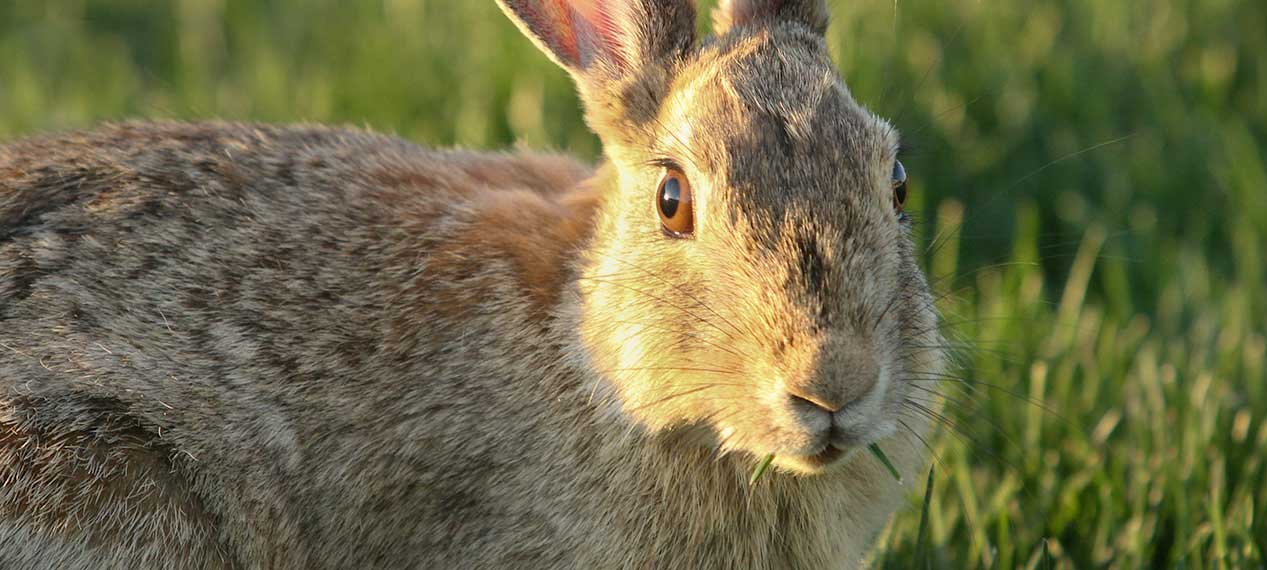
Why are there so many rabbits this year?
The rabbit population seems to be running rampant this year! It could be due to the extra precipitation we’ve been having. More water leads to more growth in vegetation and creates more food for these furry little guys. If their food is abundant, the number of litters will increase. On average, rabbits have about 2-6 litters per year, each containing up to 6 babies. Rabbits use grass and weeds not only to provide food, but also as shelter for themselves and their young. These furry friends spend the entirety of their life on less than 10 acres total, so there’s a good chance that once they’ve made a home out of your lawn, without deterrent, they’re here to stay.
How Rabbits damage your lawn
Typically, rabbit damage can create big problems for yards. They gnaw plants down to the root and concentration of urine can create brown spots in lawns. If you’ve been noticing spots in your yard that have been suspiciously mowed down and are beginning to brown, our furry friends are likely the culprit. Rabbits love to eat grass, and will munch it all the way down to the crown. This puts a lot of stress on the plant. If areas of your lawn have been damaged, the best thing to do is to fence off the area and keep it well watered and fertilized to help it grow back. The rabbits don’t eat the root system, so your lawn has a great chance of coming back.
Getting rid of Rabbits in your lawn
Although getting rid of established rabbit families is difficult, it isn’t impossible. Rabbits love anything that provides shelter, like low-to-the-ground shrubs, bushes, and taller grass. By eliminating areas they can hide, it makes their lives more difficult. Trim shrubs and bushes, put chicken wire below porches and elevate any decorative garden pieces that may be offering them refuge. You can also cut off their food supply. Fence off gardens, making sure fence openings are smaller than a rabbit’s head and dug 6 inches into the ground so they can’t go underneath. Spraying different odors on your plants, like capsaicin (pepper extract), castor oil, ammonium salts, or predator urine can also help! However, it must be reapplied after every watering or rain. It’s also smart to utilize your pets. Get your dogs to chase the rabbits, or let your cat outside to be the fearsome predator they are!
Rabbit damage can be very frustrating. It creates brown spots in your lawn and can ruin a garden if it goes unchecked. However, with the right prevention and proper lawn care, you can get the furry nuisances to leave your lawn alone!
How to Deal With Rabbit Holes in Your Yard
Discovering rabbit holes in yards can be a significant issue for many homeowners. Not only do these burrows detract from the visual appeal of your lawn, but they can also signal a deeper problem with wildlife in your vicinity. This article will delve into effective methods for addressing rabbit holes and preventing further damage to your lawn.
Understanding Rabbit Behavior
Rabbits are notorious for their digging habits, which can substantially harm gardens and yards. Grasping their behavior is crucial in tackling this challenge. Rabbits dig burrows for shelter and reproduction, potentially increasing their population on your property. Besides the unsightly holes, rabbits can feed on your garden's vegetation and grass, worsening the condition of your lawn.
To gain insights into the impact rabbits can have on your lawn and possible countermeasures, explore our guide on do rabbits eat grass.
Preventative Strategies
Preventing rabbit incursions is crucial. Here are some effective strategies:
- Fencing: Erecting a fence can effectively prevent rabbits from accessing your property. It should be buried a few inches into the ground to block digging attempts.
- Repellents: Using commercial or natural repellents can deter rabbits. Garlic or chili pepper sprays are useful natural alternatives.
- Habitat modification: Making your yard less appealing by removing shelters like low shrubbery can discourage rabbits from settling.
For those facing severe wildlife control issues, understanding the methods for rabbit grass and small mammal management is vital for maintaining a healthy lawn.
Repairing Rabbit Damage
After mitigating the rabbit threat, repairing your lawn is the next step. This may include filling rabbit holes and reseeding damaged areas. A well-maintained lawn can deter rabbits and other wildlife from returning.
For maintaining a pristine lawn, especially post-rabbit damage, our bunny in grass management strategies provide excellent tips.
Professional Intervention
In cases of significant infestations or persistent damage, professional help may be required. Wildlife control experts can offer tailored solutions for a rabbit-free yard and help prevent future issues.
Deciding when it's necessary to seek experts can be aided by understanding the implications of having a rabbit in backyard good or bad. While rabbits contribute to local ecosystems, their presence should not compromise your lawn's health and aesthetics.
Conclusion
Dealing with rabbit holes in your yard can be challenging, but with the right strategies, it's manageable. Understanding rabbit behavior, implementing preventative measures, and repairing damage are vital to maintaining a beautiful, rabbit-free lawn. Effective wildlife management involves balancing your lawn's health with coexisting with local fauna.
3 thoughts on “Rabbit Damage in Your Lawn”
Comments are closed.

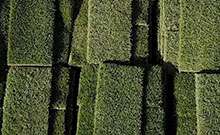

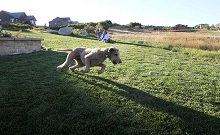

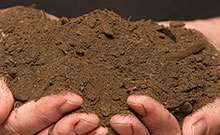
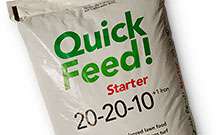
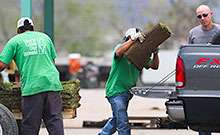

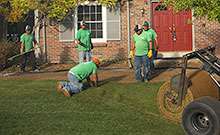
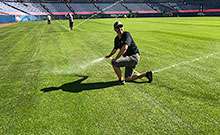
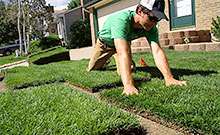
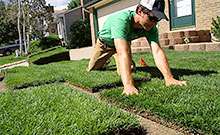

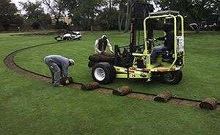
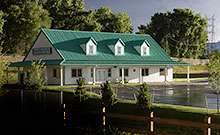

Wild rabbits in North America are native species that evolved here millions of years ago before humans even existed. Yet here you are encouraging people to let their ALIEN cats and dogs to destroy them, which they do extremely well: especially babies – watch videos on any social media of babies missing the top of their skull and half of their face. yes very sad. Even simple cuts made by cat and dog teeth and claws are lethal to baby rabbits and hares from the bacteria in these introduced animals. Several species of rabbits have already gone extinct from these introduced animals in Mexico, and are in danger in the USA (New England cottontail, brush rabbits and pigmy rabbits) people should be encouraging and protecting native rabbits instead of abusing them further as you encourage them to do here.
Try to get rid of rabbits in our lawn
Use a pellet gun instead.